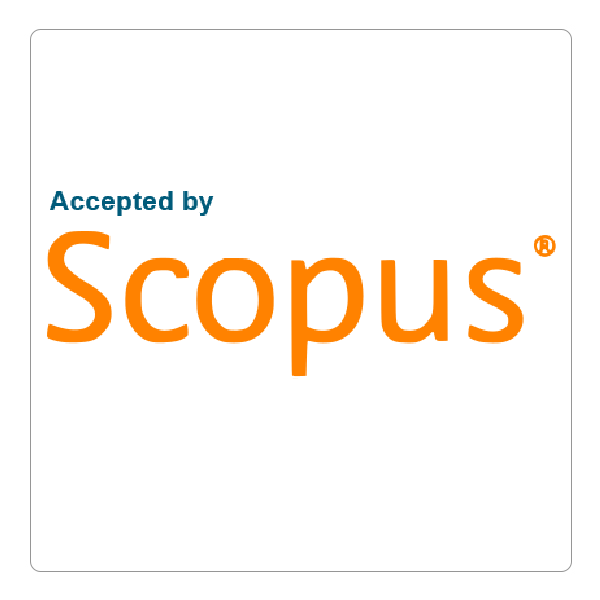How to Cite This Article
Abdullah, Adil Othman
(2024)
"A Survey of Root Canal Treatment in Kurdish Community: A pilot study,"
Polytechnic Journal: Vol. 14:
Iss.
2, Article 8.
DOI: https://doi.org/10.59341/2707-7799.1842
Document Type
Original Article
Abstract
Objective To analyze and describe the techniques and procedures employed in root canal treatment in the Kurdistan Region.
Method This study was conducted in 2023 and involved a simple random sample of 210 dentists/endodontists practitioners. The survey was spread throughout both private and governmental sectors in three distinct locations within the Kurdistan Region. The study aimed to enhance dentists' awareness and knowledge of the latest devices and advanced techniques used in the field of endodontics. The data were evaluated using basic summary statistics.
Results The eighty seven percentage of the practitioners responded. The majority of participants reported using step-back instrumentation K-type files 65% as their primary procedures for root canal preparation and intracanal instruments. Overall, 46% of the individuals abstained from using intracanal medications in their professional practice. The cold lateral compaction method was selected by 80% of the respondents. However, two percentage employed magnification devices, whilst 71% utilised electronic apex locators EAL. Among the respondents who reported using rotary nickel titanium files, 75 % used the Protaper system.
Conclusions: Traditional practices in the Kurdistan Region lack scientific evidence to prove their efficacy. The study's findings indicate that it is essential to include evidence-based practice concepts in educational curriculum, continuous professional development programs, and advanced academic research.
Receive Date
17/08/2024
Revise Date
24/10/2024
Accept Date
05/11/2024
References
[1] Bolourchi I, Pourmousavi L. A novel hybrid hand instrumentation technique for root canal preparation. Iran Endod J 2018;13:461e8. https://doi.org/10.22037/iej.v13i4.19179.
[2] Nasiri K, Wrbas KT. Accuracy of different generations of apex locators in determining working length: a systematic review and meta-analysis. Saudi Dent J 2022;34:11e20. https://doi.org/10.1016/j.sdentj.2021.09.020.
[3] Nogueira D, Bueno CE, Kato AS, Martin AS, Pelegrine RA, Limoeiro AG, et al. Effect of immersion in sodium hypochlorite on the cyclic fatigue resistance of three rotary instruments. J Conserv Dent Endod 2020;23. https://doi.org/10. 4103/JCD.JCD_117_19.
[4] Dash G, Mishra L, Singh NR, Behera R, Misra SR, Kumar M, et al. Prevalence and quality of endodontic treatment in patients with cardiovascular disease and associated risk factors. J Clin Med 2022;11. https://doi.org/10.3390/jcm11206046.
[5] Beck-Broichsitter BE, Schmid H, Busch HP, Wiltfang J, Becker ST. Long-term survival of teeth in the posterior region after apical surgery. J Cranio-Maxillo-Fac Surg 2018;46: 1934e8. https://doi.org/10.1016/j.jcms.2018.08.005.
[6] Fransson H, Bjørndal L, Frisk F, Dawson VS, Landt K, Isberg PE, et al. Factors associated with extraction following root canal filling in adults. J Dent Res 2021;100:608e14. https://doi.org/10.1177/0022034520982962.
[7] Karamifar K, Tondari A, Saghiri MA. Endodontic periapical lesion: an overview on the etiology, diagnosis, and current treatment modalities. Eur Endod J 2020;5:54e67. https://doi. org/10.14744/eej.2020.42714.
[8] Kim SM, Ahn E. Tooth survival following non-surgical root canal treatment in south Korean adult population: an 11-year follow-up study of a historical cohort. Eur Endod J 2022;7: 20e6. https://doi.org/10.14744/eej.2021.86648.
[9] El-Ma’aita AM, Mahasneh SA, Hamandi MA, AlRabab’ah MA. Molar root canal treatment performed by undergraduate dental students: an observational study of procedural errors and student perception. BMC Med Educ 2024;24:437. https://doi.org/10.1186/s12909-024-05397-z.
[10] Fransson H, Dawson V. Tooth survival after endodontic treatment. Int Endod J 2023;56:140e53. https://doi.org/10. 1111/iej.13835.
[11] Eleazer PD, Gilbert GH, Funkhouser E, Reams GJ, Law AS, Benjamin PL. Techniques and materials used by general dentists during endodontic treatment procedures: findings from the national dental practice-based research network. J Am Dent Assoc 2016;147:19e27. https://doi.org/10.1016/j. adaj.2015.05.021.
[12] Bansal C, Sood H, Kaur H. The principles of techniques for cleaning root canals: a review. Int J Health Sci 2021;5:257e63. https://doi.org/10.53730/ijhs.v5nS1.5547.
[13] Alamoudi RA. The smear layer in endodontics: to keep or remove e an updated overview. Saudi Endod J 2019;9. https://doi.org/10.4103/sej.sej_95_18.
[14] Al-Habib M, Howait M. Assessment of mesiobuccal canal configuration, prevalence, and inter-orifice distance at different root thirds of maxillary first molars: a CBCT study. Clin Cosmet Invest Dent 2021;13:105e11. https://doi.org/10. 2147/CCIDE.S300241.
[15] Alhujhuj RR, Jouhar R, Ahmed MA, Almujhim AA, Albutayh MT, Adanir N. Evaluation of root canal configuration of maxillary and mandibular first molar by CBCT: a retrospective cross-sectional study. Diagnostics 2022;12. https://doi.org/10.3390/diagnostics12092121.
[16] Coelho MS, Lacerda M, Silva MHC, Rios MA. Locating the second mesiobuccal canal in maxillary molars: challenges and solutions. Clin Cosmet Invest Dent 2018;10:195e202. https://doi.org/10.2147/CCIDE.S154641.
[17] Hiebert BM, Abramovitch K, Rice D, Torabinejad M. Prevalence of second mesiobuccal canals in maxillary first molars detected using cone-beam computed tomography, direct occlusal access, and coronal plane grinding. J Endod 2017;43: 1711e5. https://doi.org/10.1016/j.joen.2017.05.011.
[18] Gomes B, Aveiro E, Kishen A. Irrigants and irrigation activation systems in endodontics. Braz Dent J 2023;34:1e33. https://doi.org/10.1590/0103-6440202305577.
[19] Alharbi AM, Alharbi TM, Alqahtani MS, Elfaskhany FM, Afifi IK, Rajeh MT, et al. A comparative evaluation of antibacterial efficacy of moringa oleifera leaf extract, octenidine dihydrochloride, and sodium hypochlorite as intracanal irrigants against enterococcus faecalis: an in vitro study. Int J Dent 2023:7690497. https://doi.org/10.1155/2023/ 7690497.
[20] Brochado Martins JF, Guerreiro Viegas O, Cristescu R, Diogo P, Shemesh H. Outcome of selective root canal retreatment: a retrospective study. Int Endod J 2023;56: 345e55. https://doi.org/10.1111/iej.13871.
[21] Ezmek B, Arslan A, Delilbasi C, Sencift K. Comparison of hemodynamic effects of lidocaine, prilocaine, and mepivacaine solutions without vasoconstrictor in hypertensive patients. J Appl Oral Sci 2010;18:354e9. https://doi.org/10.1590/ S1678-77572010000400006.
[22] Sharma A, Sharma R, Sharma M, Jain S, Rai A, Gupta S. Endodontic flare-ups: an update. Cureus 2023;15. https://doi. org/10.7759/cureus.41438.
[23] Gupta NK, Mantri SP, Paul B, Dube KA, Ghosh S. Incidence of postoperative pain after single-visit and multiple-visit root canal therapy: a randomized controlled trial. J Conserv Dent 2021;24:348e53. https://doi.org/10.4103/jcd.jcd_216_21.
[24] Wong AWY, Tsang CSC, Zhang S, Li KY, Zhang C, Chu CH. Treatment outcomes of single-visit versus multiple-visit nonsurgical endodontic therapy: a randomized clinical trial. BMC Oral Health 2015;15:162. https://doi.org/10.1186/ s12903-015-0148-x.
[25] Ng YL, Mann V, Gulabivala K. A prospective study of the factors affecting outcomes of nonsurgical root canal treatment: part 1: periapical health. Int Endod J 2011 Jul;44(7): 583e609. https://doi.org/10.1111/j.1365-2591.2011.01872.x.
[26] Siqueira Jr JF, Ro^ças IN. Clinical implications and microbiology of bacterial persistence after treatment procedures. J Endod 2008 Nov;34(11):1291e1301.e3. https://doi.org/10. 1016/j.joen.2008.07.028.
[27] Torabinejad M, Corr R, Handysides R, Shabahang S. Outcomes of nonsurgical retreatment and endodontic surgery: a systematic review. J Endod 2015;41:1039e52. https://doi.org/ 10.1016/j.joen.2015.06.002.
[28] Durr ES. How to apply evidence-based principles in clinical dentistry. J Multidiscip Healthc 2019;12:131e6. https://doi. org/10.2147/JMDH.S182913.
[29] Atmeh A, Al-Hadi Hamasha A. Outcome assessment of nonsurgical root canal treatment by patients: what factors can influence their evaluation? Br Dent J 2020;228:762e6. https:// doi.org/10.1038/s41415-020-1528-4.
[30] Juric R, Vidmar G, Blagus R, Jan J. Factors associated with the outcome of root canal treatment: a cohort study conducted in a private practice. Int Endod J 2024;57:377e93. https://doi. org/10.1111/iej.14022.











Follow us: